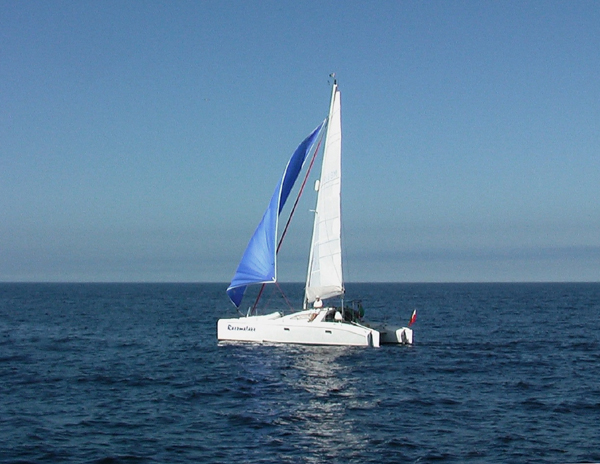
The way to keep fuel costs down is obviously to sail everywhere! From somewhat unscientific observation, I reckon most cruisers cover more than half their miles under engine in the Mediterranean.
So, what is the secret of managing to sail nearly everywhere?
By far the most important is not having a schedule, and not being in a hurry. If the winds are too light or contrary, wait until they change. If you have a deadline to get somewhere you obviously cannot do this.
In practice, there is nearly always a sea breeze in the afternoon along the coast. But, offshore, you need a proper gradient wind. For our passage from Minorca to Sardinia, we had to wait until a Tramonta (strong northerly wind ) passed, then rode the tail of it to get a fast but bumpy trip.
If the winds are light, you need to be content to sail slowly. And if the wind dies in the evening before you have reached your planned destination, you need to find a nearby bay, preferably with a sandy bottom, to anchor for the night. At the risk of broaching a contentious subject much debated elsewhere, this is where a multihull scores. At nightfall, the wind usually dies away completely, and the yacht lies whichever way it likes, typically beam-on to the gentle swell that never ceases entirely. Then monohulls roll their crews onto the floor while multihull crews sleep soundly.
You need a boat that sails well in light airs. It seems to me that many cruising yachtsmen favour magnificent deep keel yachts ideally suited to crossing the North Sea in a gale. But many of them are dogs in F2/3, or would be if they did not have such fine diesel engines!

|
| A gennaker keeps the boat moving in light airs |
Any boat can be made to sail faster in light winds with extra, big and lightweight sails. Most cruisers carry a spinnaker or cruising chute, but you hardly ever see them set in the Mediterranean. Either the wind is too light, or too strong, or too variable, or there is a sea running that makes foredeck work unappealing to a relatively weak husband and wife crew. The solution is a gennaker. This is a large, lightweight sail that furls around its own untwistable luff using a continuous line lead from the drum at the foot of the sail to the cockpit. It can be hoisted before weighing anchor in the morning, when all is calm, and can then be easily set and furled umpteen times during the day as conditions change. We hoist ours every morning when there is any chance we might be able to use it, and then find we do use it frequently, even in marginal conditions.